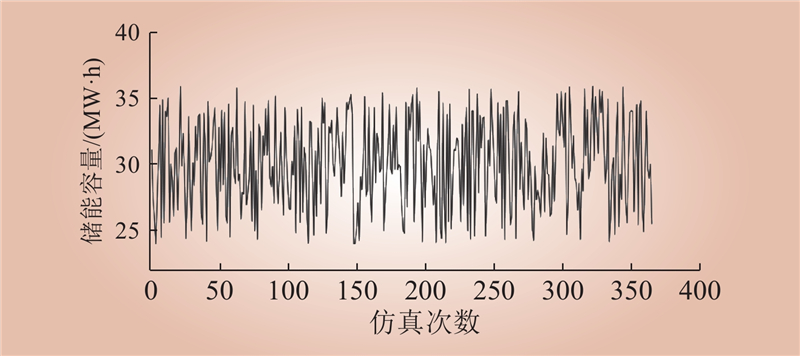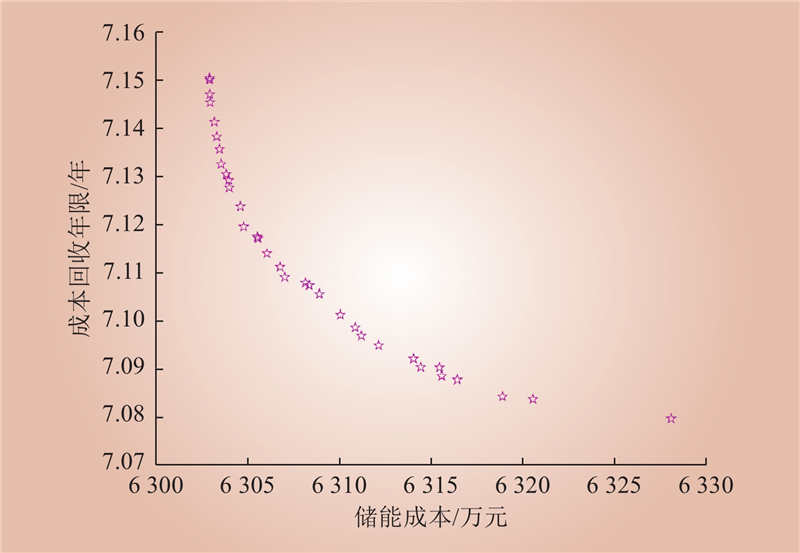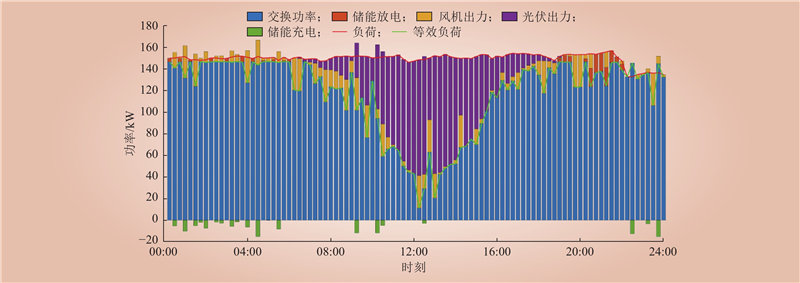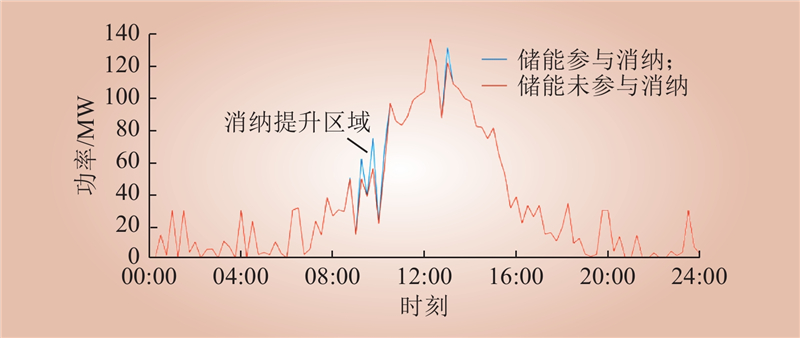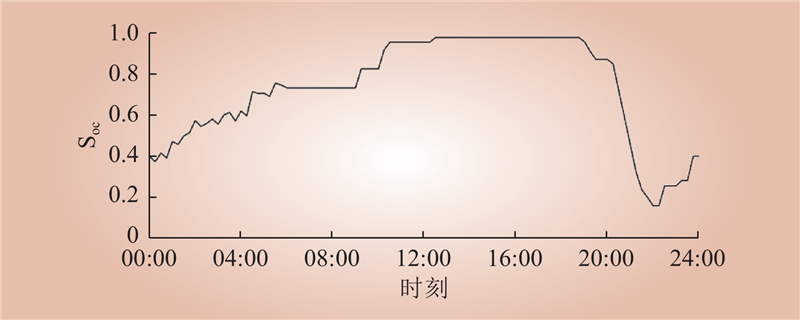| 1 |
张沈习, 王丹阳, 程浩忠, 等. 双碳目标下低碳综合能源系统规划关键技术及挑战[J]. 电力系统自动化, 2022, 46 (8): 189- 207.
|
|
ZHANG Shenxi, WANG Danyang, CHENG Haozhong, et al. Key technologies and challenges of low-carbon integrated energy system planning for carbon emission peak and carbon neutrality[J]. Automation of Electric Power Systems, 2022, 46 (8): 189- 207.
|
| 2 |
王威, 吴晶晶, 葛亚平, 等. 双碳背景下碳排放核算法及策略分析: 以铜铝行业为例[J]. 有色金属(冶炼部分), 2022, (4): 1- 11.
|
|
WANG Wei, WU Jingjing, GE Yaping, et al. Carbon emission accounting method and strategy analysis under the background of double carbon: taking copper and aluminum industry as an example[J]. Nonferrous Metals (Extractive Metallurgy), 2022, (4): 1- 11.
|
| 3 |
赵璞, 周满, 高建宇, 等. 基于电能替代的园区综合能源规划评价方法[J]. 中国电力, 2021, 54 (4): 130- 140.
|
|
ZHAO Pu, ZHOU Man, GAO Jianyu, et al. Evaluation method for park-level integrated energy system based on electric power substitution[J]. Electric Power, 2021, 54 (4): 130- 140.
|
| 4 |
张军六, 李佳朋, 唐震, 等. 基于本地测量的高比例新能源电力系统不平衡功率估算与附加功率控制策略[J]. 电力科学与技术学报, 2022, 37 (3): 50- 60.
|
|
ZHANG Junliu, LI Jiapeng, TANG Zhen, et al. Local measurement based unbalanced active power estimation and supplementary power modulation for power systems with high proportions of renewable energy[J]. Journal of Electric Power Science and Technology, 2022, 37 (3): 50- 60.
|
| 5 |
舒印彪, 张智刚, 郭剑波, 等. 新能源消纳关键因素分析及解决措施研究[J]. 中国电机工程学报, 2017, 37 (1): 1- 8.
|
|
SHU Yinbiao, ZHANG Zhigang, GUO Jianbo, et al. Study on key factors and solution of renewable energy accommodation[J]. Proceedings of the CSEE, 2017, 37 (1): 1- 8.
|
| 6 |
刘联涛, 刘飞, 吉平, 等. 储能参与新能源消纳的优化控制策略[J]. 中国电力, 2023, 56 (3): 137- 143.
|
|
LIU Liantao, LIU Fei, JI Ping, et al. Research on optimal control strategy of energy storage for improving new energy consumption[J]. Electric Power, 2023, 56 (3): 137- 143.
|
| 7 |
郭久亿, 刘洋, 郭焱林, 等. 不同典型用户侧储能配置评估与运行优化模型[J]. 电网技术, 2020, 44 (11): 4245- 4253.
|
|
GUO Jiuyi, LIU Yang, GUO Yanlin, et al. Configuration evaluation and operation optimization model of energy storage in different typical user-side[J]. Power System Technology, 2020, 44 (11): 4245- 4253.
|
| 8 |
颜志敏, 王承民, 连鸿波, 等. 计及缺电成本的用户侧蓄电池储能系统容量规划[J]. 电力系统自动化, 2012, 36 (11): 50- 54.
|
|
YAN Zhimin, WANG Chengmin, LIAN Hongbo, et al. Capacity plan of battery energy storage system in user side considering power outage cost[J]. Automation of Electric Power Systems, 2012, 36 (11): 50- 54.
|
| 9 |
刘永前, 梁超, 阎洁, 等. 风-光电站中储能系统混合最优配置及其经济性研究[J]. 中国电力, 2020, 53 (12): 143- 150.
|
|
LIU Yongqian, LIANG Chao, YAN Jie, et al. Optimal configuration and economic study of hybrid energy storage system in wind and solar power plants[J]. Electric Power, 2020, 53 (12): 143- 150.
|
| 10 |
陈厚合, 杜欢欢, 张儒峰, 等. 考虑风电不确定性的混合储能容量优化配置及运行策略研究[J]. 电力自动化设备, 2018, 38 (8): 174- 182, 188.
|
|
CHEN Houhe, DU Huanhuan, ZHANG Rufeng, et al. Optimal capacity configuration and operation strategy of hybrid energy storage considering uncertainty of wind power[J]. Electric Power Automation Equipment, 2018, 38 (8): 174- 182, 188.
|
| 11 |
谢雨龙, 罗逸飏, 李智威, 等. 考虑微网新能源经济消纳的共享储能优化配置[J]. 高电压技术, 2022, 48 (11): 4403- 4412.
|
|
XIE Yulong, LUO Yiyang, LI Zhiwei, et al. Optimal allocation of shared energy storage considering the economic consumption of microgrid new energy[J]. High Voltage Engineering, 2022, 48 (11): 4403- 4412.
|
| 12 |
LI R, WANG W, CHEN Z, et al. Optimal planning of energy storage system in active distribution system based on fuzzy multi-objective bi-level optimization[J]. Journal of Modern Power Systems and Clean Energy, 2018, 6 (2): 342- 355.
DOI
|
| 13 |
SAEZ-DE-IBARRA A, MILO A, GAZTAÑAGA H, et al. Co-optimization of storage system sizing and control strategy for intelligent photovoltaic power plants market integration[J]. IEEE Transactions on Sustainable Energy, 2016, 7 (4): 1749- 1761.
DOI
|
| 14 |
GAO J J, ZHENG Y, LI J M, et al. Optimal model for complementary operation of a photovoltaic-wind-pumped storage system[J]. Mathematical Problems in Engineering, 2018, 2018, 1- 9.
|
| 15 |
戴嘉彤, 董海鹰. 基于抽水蓄能电站的风光互补发电系统容量优化研究[J]. 电网与清洁能源, 2019, 35 (6): 76- 82.
|
|
DAI Jiatong, DONG Haiying. Research on the capacity optimization of the wind-solar hybrid power supply system based on pumped storage power station[J]. Advances of Power System & Hydroelectric Engineering, 2019, 35 (6): 76- 82.
|
| 16 |
鲍海波, 韦化, 郭小璇, 等. 考虑风电不确定性的概率区间潮流模型与算法[J]. 中国电机工程学报, 2017, 37 (19): 5633- 5642.
|
|
BAO Haibo, WEI Hua, GUO Xiaoxuan, et al. Model and algorithm of probabilistic interval power flow considering wind power uncertainty[J]. Proceedings of the CSEE, 2017, 37 (19): 5633- 5642.
|
| 17 |
刘宝碇, 赵瑞清, 王纲. 不确定规划及应用[M]. 北京: 清华大学出版社, 2003.
|
| 18 |
罗仕华, 胡维昊, 黄琦, 等. 市场机制下光伏/小水电/抽水蓄能电站系统容量优化配置[J]. 电工技术学报, 2020, 35 (13): 2792- 2804.
|
|
LUO Shihua, HU Weihao, HUANG Qi, et al. Optimization of photovoltaic/small hydropower/pumped storage power station system sizing under the market mechanism[J]. Transactions of China Electrotechnical Society, 2020, 35 (13): 2792- 2804.
|
| 19 |
王荔妍, 陈启鑫, 何冠楠, 等. 考虑电池储能寿命模型的发电计划优化[J]. 电力系统自动化, 2019, 43 (8): 93- 101.
|
|
WANG Liyan, CHEN Qixin, HE Guannan, et al. Optimization of generation scheduling considering battery energy storage life model[J]. Automation of Electric Power Systems, 2019, 43 (8): 93- 101.
|
| 20 |
崔连标, 段宏波, 许金华. 交易费用对我国碳市场成本有效性的影响: 基于国内碳交易试点间的模拟分析[J]. 管理评论, 2017, 29 (6): 23- 31.
|
|
CUI Lianbiao, DUAN Hongbo, XU Jinhua. Impacts of transaction costs on cost saving effect of carbon trading market in China[J]. Management Review, 2017, 29 (6): 23- 31.
|
| 21 |
孟宇翔, 马刚, 李豪, 等. 基于绿证-阶梯式碳交易交互的源荷互补调度优化[J]. 中国电力, 2023, 56 (9): 149- 156.
|
|
MENG Yuxiang, MA Gang, LI Hao, et al. Optimal scheduling of source-load complementation based on green certificate-step carbon trading interaction[J]. Electric Power, 2023, 56 (9): 149- 156.
|
| 22 |
薛贵元, 吴垠, 诸晓骏, 等. 计及用能权配额约束的发电商竞价策略双层优化方法[J]. 中国电力, 2023, 56 (5): 51- 61.
|
|
XUE Guiyuan, WU Yin, ZHU Xiaojun, et al. Bi-level optimization method for bidding strategy of power suppliers considering energy-consuming right[J]. Electric Power, 2023, 56 (5): 51- 61.
|
| 23 |
田福银, 马骏, 王灿, 等. 基于双层主从博弈的综合能源系统多主体低碳经济运行策略[J]. 中国电力, 2022, 55 (11): 184- 193.
|
|
TIAN Fuyin, MA Jun, WANG Can, et al. Multi-agent low-carbon and economy operation strategy of integrated energy system based on Bi-level master-slave game[J]. Electric Power, 2022, 55 (11): 184- 193.
|
| 24 |
杨青润, 丁涛, 文亚, 等. 计及碳排约束的跨国电力互联网新能源消纳分析[J]. 智慧电力, 2019, 47 (10): 1- 6, 30.
|
|
YANG Qingrun, DING Tao, WEN Ya, et al. Analysis on renewable energy integration in transnational power interconnection considering carbon emission constraints[J]. Smart Power, 2019, 47 (10): 1- 6, 30.
|
| 25 |
朱灿元, 杨超, 李舒涛, 等. 考虑清洁能源与储能的分布式数据中心低碳调度策略[J]. 智慧电力, 2023, 51 (2): 16- 23.
|
|
ZHU Canyuan, YANG Chao, LI Shutao, et al. Low-carbon scheduling strategy for distributed data centers considering clean energy and energy storage[J]. Smart Power, 2023, 51 (2): 16- 23.
|


